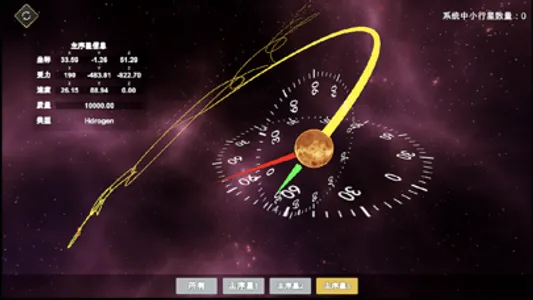1. For a batter observation, all volumes are enlarged by many times (the range of gravity in the real universe is much larger, and the planet is much smaller, so don’t worry about breaking the Roche limit)
2. Users can add up to 7 Sun, and randomly distribute them to nearby spaces.
3. Users can add an asteroid matrix. Asteroids have no gravity (negligibly small in the reality) and are only affected by Suns. (Well, in fact, it is afraid that the cpu is limited, and it is impossible to calculate the mutual gravitational force of too many stars.)
4. The three-body system is very unstable, and it is prone to gravitational slingshot effect. If a star is too far away from other stars, it may never come back.
5. However, users can also turn on an additional r/10 parameter to increase the gravitational force of stars at a long distance and make it return to the system (after turning on the parameter, it can only be used for demonstration, and the data has no reference value).
2. Users can add up to 7 Sun, and randomly distribute them to nearby spaces.
3. Users can add an asteroid matrix. Asteroids have no gravity (negligibly small in the reality) and are only affected by Suns. (Well, in fact, it is afraid that the cpu is limited, and it is impossible to calculate the mutual gravitational force of too many stars.)
4. The three-body system is very unstable, and it is prone to gravitational slingshot effect. If a star is too far away from other stars, it may never come back.
5. However, users can also turn on an additional r/10 parameter to increase the gravitational force of stars at a long distance and make it return to the system (after turning on the parameter, it can only be used for demonstration, and the data has no reference value).
Show More


